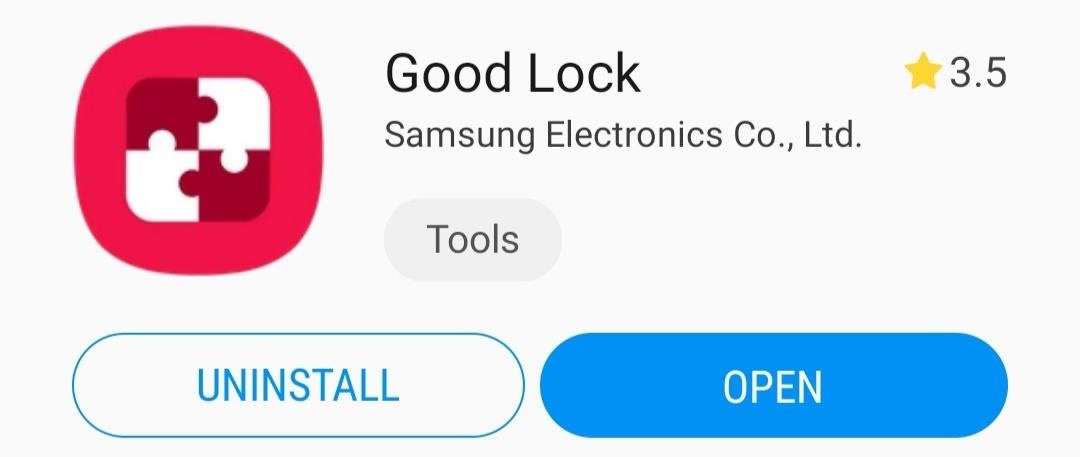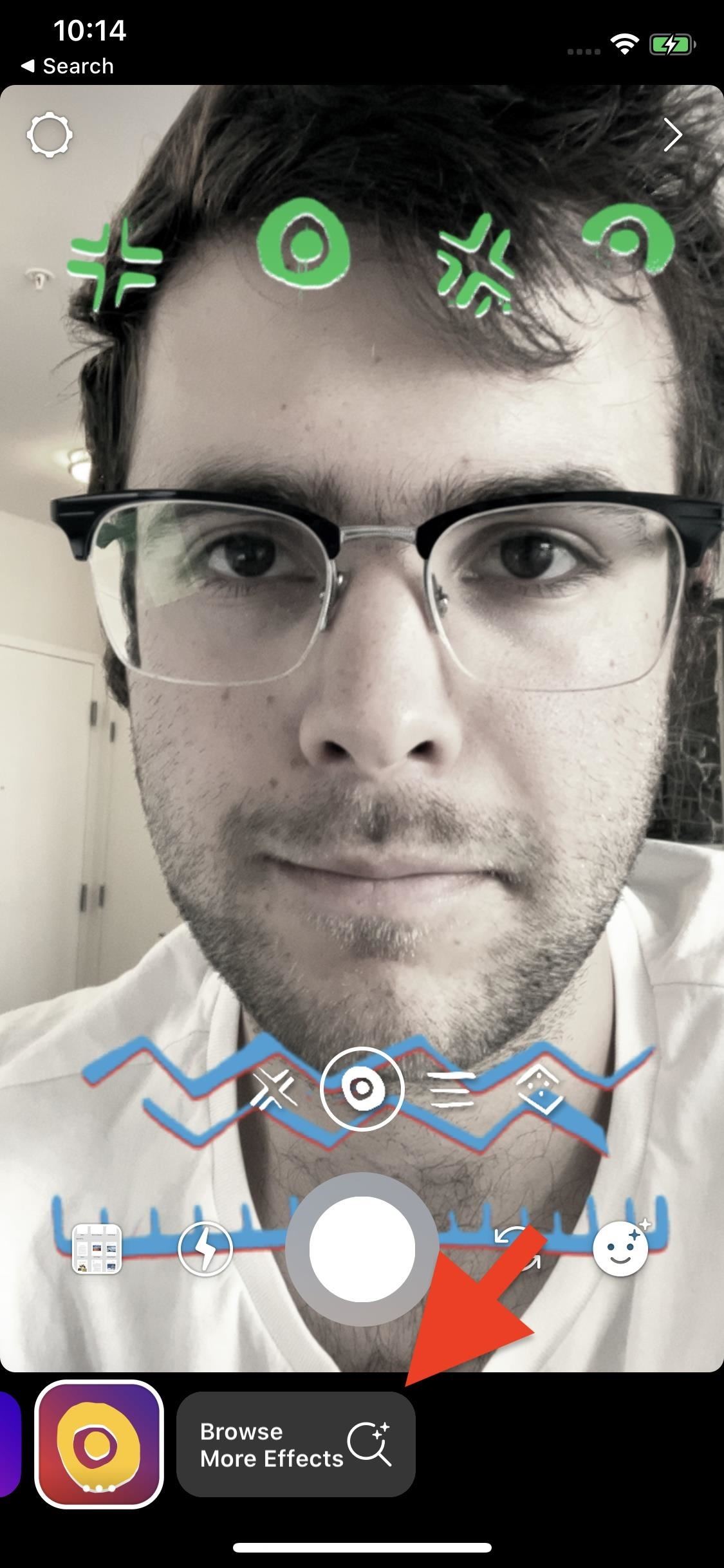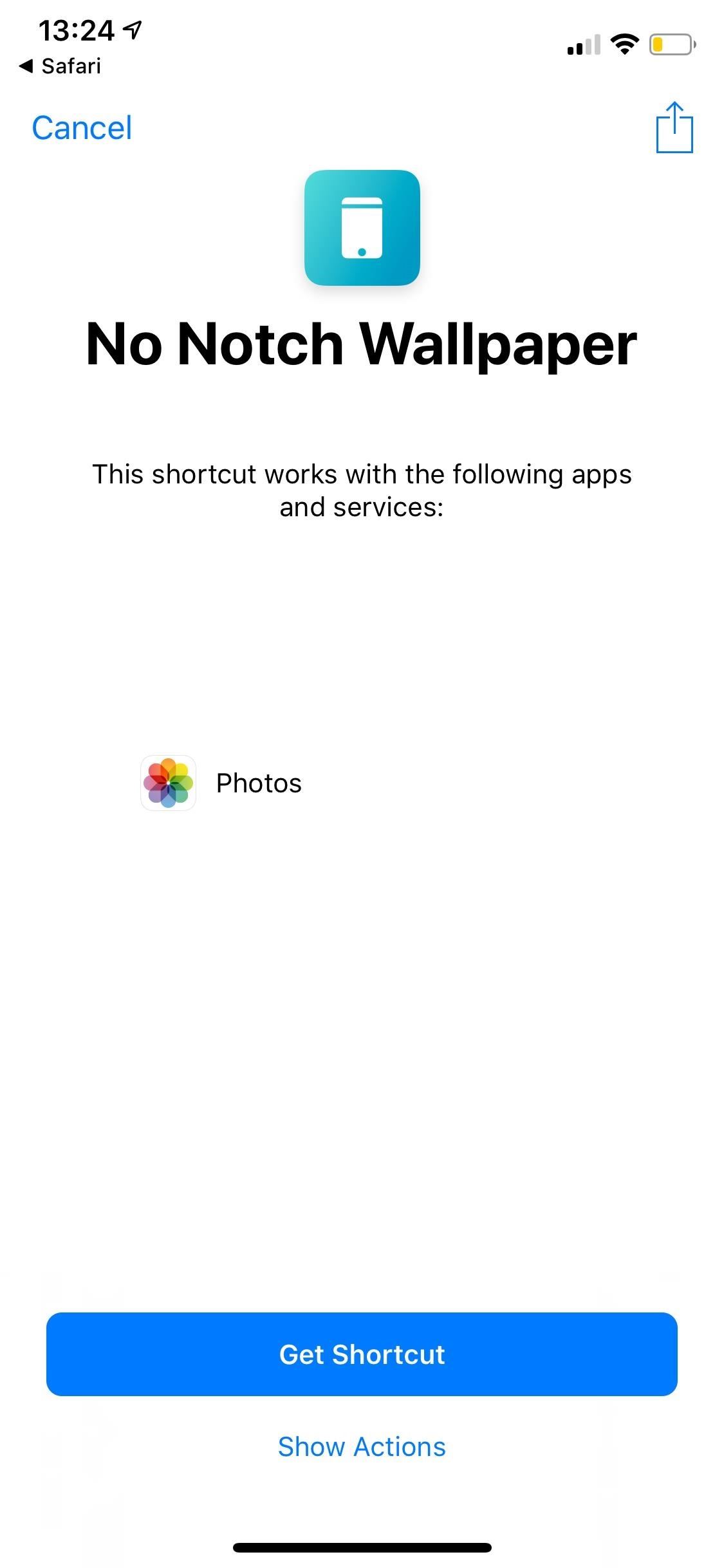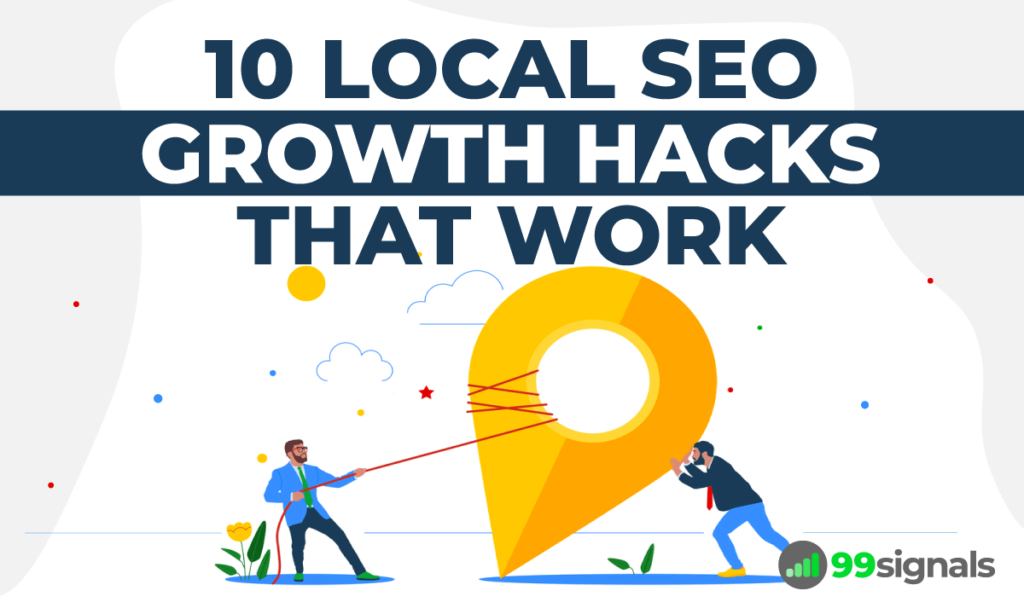
10 Local SEO Growth Hacks That Work
Local SEO doesn’t have to be complicated. With a few simple growth hacks, you can boost your local rankings and stand out in your local area.
These hacks are effective, practical, and—when combined with a tool like
Let’s dive into 10 local SEO growth hacks that can help your business achieve just that.
Table of Contents
- 1. Optimize Your Google Business Profile (GBP)
- 2. Focus on Local Keywords
- 3. Leverage Local Link Building
- 4. Add Location Pages to Your Website
- 5. Create Geo-Targeted Content
- 6. Ensure NAP Consistency Across Platforms
- 7. Optimize for Voice Search
- 8. Utilize Schema Markup
- 9. Build Local Citations
- 10. Use Hyperlocal Paid Ads for Quick Wins
- Conclusion
1. Optimize Your Google Business Profile (GBP)
Your Google Business Profile (GBP) is the most critical component of local SEO.
According to BrightLocal’s survey, 32% of SEOs think your Google Business Profile is the most important ranking factor for the Google Local Pack.
Claiming and verifying your listing should be the first step toward improving your local presence.
Start by ensuring that every detail of your GBP is accurate—your business name, address, and phone number (commonly referred to as NAP) should be consistent.
Update your business hours, especially during holidays, and keep your service offerings current.
Keywords play an essential role here, too. Incorporate relevant local keywords into your business description and services to improve your chances of showing up in local searches.
One of the best ways to improve your GBP visibility is through customer reviews. Encourage satisfied customers to leave a review, and actively respond to both positive and negative feedback.
Not only does this boost your local rankings, but it also fosters customer trust. To make managing reviews easier and more efficient, the Semrush Review Management tool can be a game-changer.
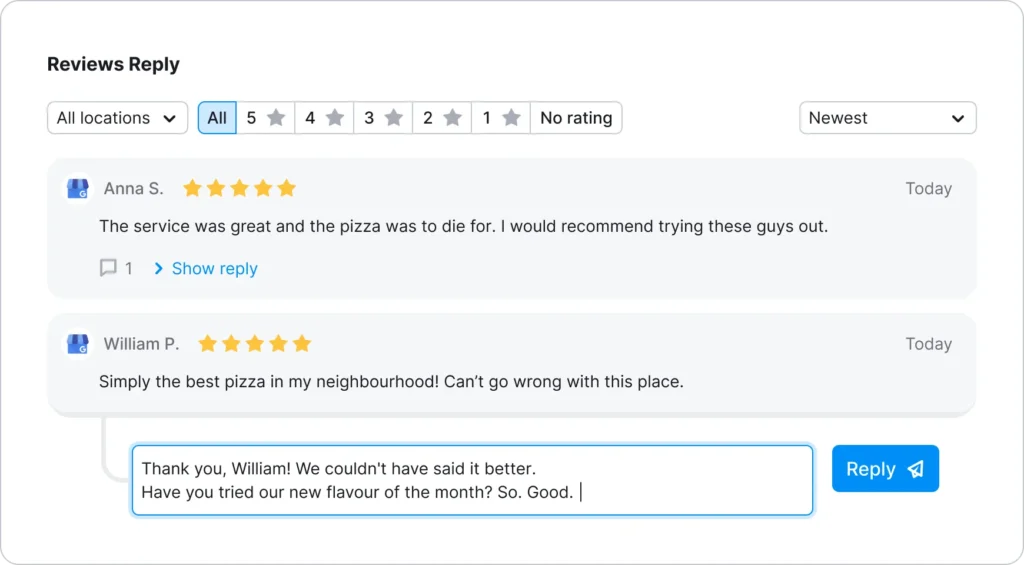
It allows you to monitor and respond to reviews across multiple platforms from one centralized dashboard. Plus, you can leverage AI to generate personalized responses to reviews or automate the whole process with AI auto-reply.
For advanced optimization, you can use

The tool also allows you to distribute your business details from GBP to other prominent local directories without manual copy/pasting.
2. Focus on Local Keywords
If your main goal is to be found locally, you need to target the right local keywords.
This starts with understanding what people in your area are searching for and how those queries align with your business.
Local keyword research should focus on location-specific terms, such as «best [service] in [city]» or «affordable [service] near me.»
Once you’ve identified these keywords, integrate them into your website’s metadata (title tags, meta descriptions), headers, and content.
If you serve multiple areas, consider creating dedicated service pages targeting each location. For instance, a plumbing company might have separate pages for «plumber in Los Angeles» and «plumber in San Diego,» each with localized content and keywords.
To get more granular with local keyword analysis and to uncover new opportunities, use tools like
Simply enter your seed keywords into the tool to generate an extensive list of relevant local keywords for your content.
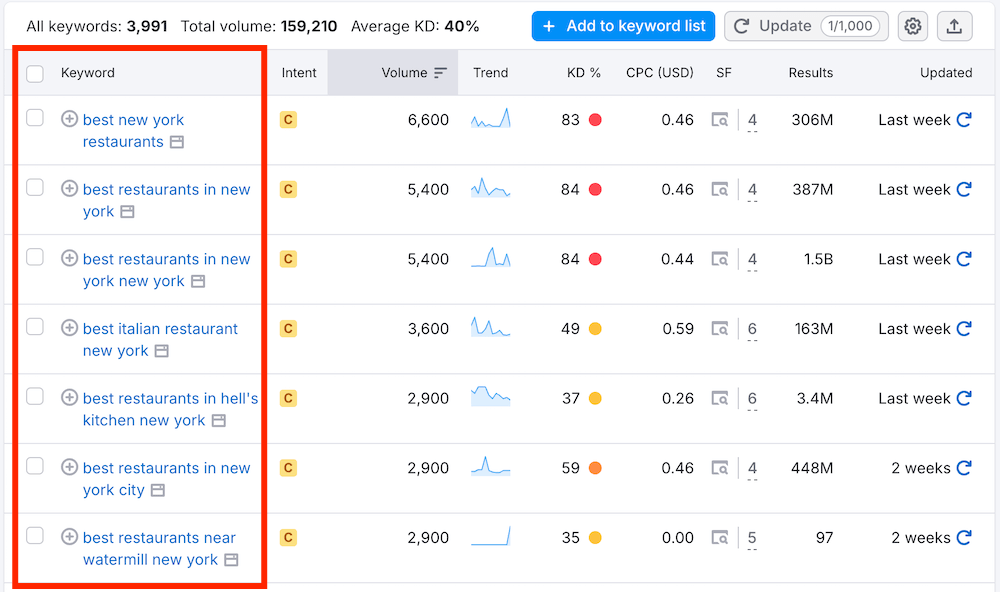
You can then filter these keywords by factors like search volume, keyword difficulty, and search intent. This lets you prioritize keywords that are not only easier to rank for but also come with a solid search volume.
3. Leverage Local Link Building
Backlinks remain a powerful ranking factor, accounting for nearly 16% of how Google ranks local search results according to BrightLocal’s survey.
Building local backlinks can be particularly effective for boosting your local SEO, as they signal to search engines that your business is trusted and relevant within the community.
You can start by collaborating with local businesses and organizations. This could be through partnerships, sponsorships, or even joint blog posts.
Local news outlets and community blogs are also great resources for backlinks. If you host or sponsor local events, you may earn mentions or links from local news websites or community forums, which can further boost your local authority.
If you’re looking to streamline your link building efforts,
This tool allows you to compare your site’s backlinks with those of your competitors, highlighting gaps where your competitors have gained links, but you haven’t.

By identifying these missed opportunities, especially from local sources such as community blogs or local news outlets, you can target relevant, high-authority websites that could boost your local SEO rankings.
4. Add Location Pages to Your Website
If your business operates in more than one area, location-specific pages can be instrumental for local SEO.
To get started, make sure each page is tailored to the respective location, with the address, contact information, and service areas clearly displayed.
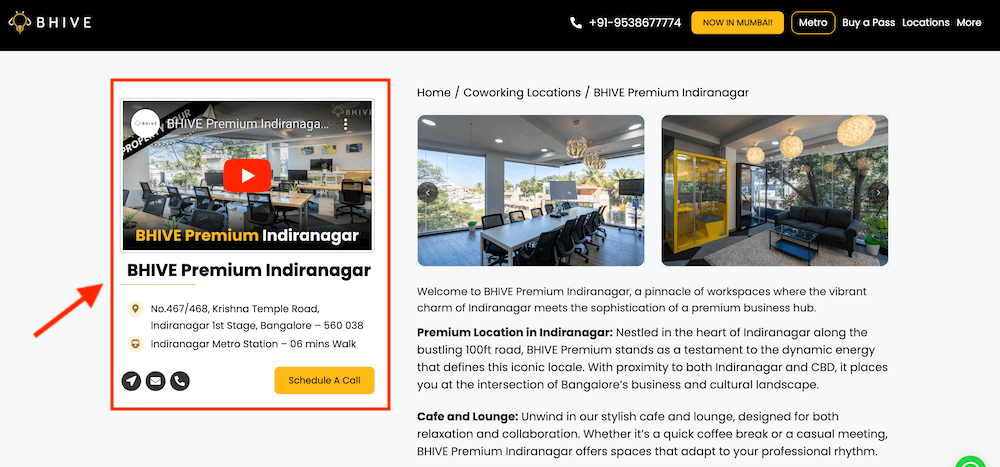
These pages also present a perfect opportunity to embed Google Maps, making it easier for potential customers to find you. Plus, embedding maps can have SEO benefits by increasing your relevance for local searches.
Don’t forget to optimize the content on each of these pages with location-based keywords. Think of each page as a mini-website that serves your local audience’s specific needs.
5. Create Geo-Targeted Content
Content is king—even for local SEO. Crafting geo-targeted content not only helps with engagement but also boosts local visibility.
Blog posts focusing on local events, news, or topics related to your industry can position you as an expert within your community.
For example, a real estate agency could publish articles about local housing market trends or spotlight neighborhood attractions.
Case studies, testimonials, and success stories from local customers are also effective at building trust and engagement with your audience.
Make sure your content stays relevant by updating it regularly. Fresh content signals to search engines that your site is active, which can positively impact rankings.
6. Ensure NAP Consistency Across Platforms
Your NAP (Name, Address, Phone number) is like your business’s online fingerprint. Ensuring that it’s consistent across all platforms—whether on your website, social media profiles, or online directories—plays a critical role in your local SEO.
Inconsistent NAP details can confuse search engines and customers alike, leading to lower rankings and missed opportunities.
Using local SEO tools like
What makes this tool particularly powerful is that it supports 150+ globally recognized directories, helping you maintain uniform business information not just locally, but across various regions and platforms.

Additionally, if your NAP details are inconsistent or incorrect on any platform,
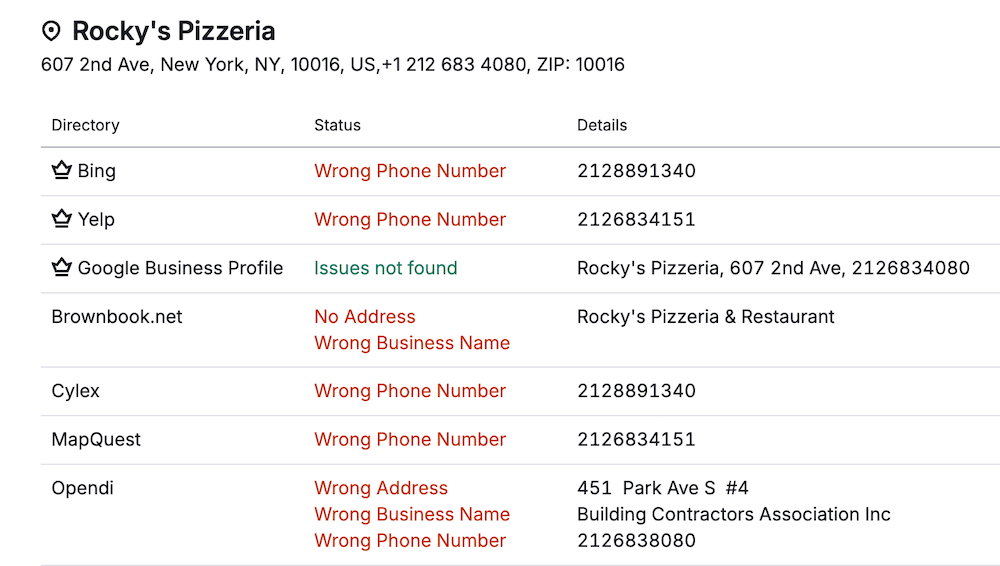
7. Optimize for Voice Search
Voice search is becoming increasingly popular, particularly for local queries. People are more likely to use conversational language when using voice search, so optimizing for long-tail keywords is essential.
Focus on natural, question-based keywords like «Where is the best pizza in [city]?» or «What’s the closest gym near me?»
These queries are highly specific, and if your website’s content answers them effectively, you’re more likely to rank in voice search results.
If you’re aiming to capture this growing segment, crafting localized FAQ sections or blog posts centered around common voice queries can be incredibly effective.
8. Utilize Schema Markup
Adding LocalBusiness schema markup to your website helps search engines better understand your business information. Schema markup is essentially structured data that provides search engines with extra details about your business, such as opening hours, services, and reviews.
By utilizing schema markup, you increase your chances of appearing in rich search results, which often leads to higher click-through rates and better visibility in local searches.
Even if the technical side of schema markup feels overwhelming, tools like
9. Build Local Citations
Local citations refer to your business being mentioned on other websites, typically in online directories like Yelp, Yellow Pages, or niche-specific platforms. Citations help improve your local search ranking by reinforcing your business’s presence and relevance within your community.
Accuracy is key when submitting your business information to directories. Any inconsistencies can confuse search engines, potentially harming your rankings.
With

10. Use Hyperlocal Paid Ads for Quick Wins
While organic efforts like local SEO take time to yield results, hyperlocal paid ads offer a faster way to get in front of potential customers in your specific geographic area.
These ads, which can be run on platforms like Google Ads or social media networks like Facebook and Instagram, allow you to target users based on their exact location, interests, and behavior.
This is particularly useful for businesses that want to drive foot traffic or target users searching for services «near me.»
For example, you can use Google Local Service Ads to appear at the very top of local search results for high-intent queries.
These ads ensure your business is highly visible to users looking for immediate solutions in your area, such as «hair salon near me» or «best fitness center in [city].»
Similarly, Facebook Ads allow for geo-targeting down to specific zip codes or neighborhoods, ensuring you reach the right local audience.
By combining these hyperlocal paid ads with ongoing organic SEO efforts, you can secure a dominant presence both in paid and organic search results, leading to a quicker increase in local visibility and customer engagement.
Conclusion
Local SEO is a powerful tool that can significantly boost your business’s visibility in your target area. By implementing these 10 growth hacks, you can improve your local search rankings, attract more customers, and grow your business within your community.
Whether it’s optimizing your Google Business Profile, building local backlinks, or ensuring NAP consistency, these strategies are simple yet effective ways to enhance your local SEO performance.
If you’re looking to take your local SEO efforts to the next level, consider using Semrush Local to streamline and optimize your processes.
- 13 Best Local SEO Tools to Improve Your Local Search Rankings
- AppSumo Review: Tips and Hacks to Get the Best Lifetime Deals
- Semrush Pricing Explained: A Breakdown of Semrush Pricing Plans

